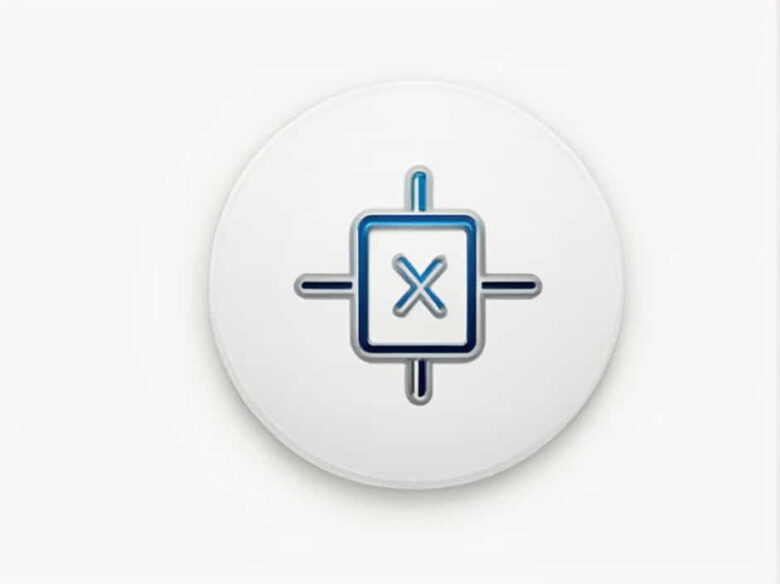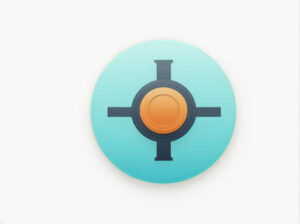A parallel plate capacitor is one of the most fundamental components in electronics and electrical engineering. It plays a crucial role in storing electrical energy and is widely used in various circuits and devices. Understanding the formula of capacitance for a parallel plate capacitor helps in designing effective circuits and optimizing energy storage.
This content explores the capacitance formula for a parallel plate capacitor, breaking down its components, the principles behind its operation, and practical applications.
What Is a Parallel Plate Capacitor?
A parallel plate capacitor consists of two flat, conductive plates placed parallel to each other, separated by an insulating material called a dielectric. The primary function of a capacitor is to store electric charge and energy in the electric field created between the plates.
Key Components of a Parallel Plate Capacitor:
- Two Conductive Plates: These act as the charge carriers.
- Dielectric Material: An insulating substance between the plates that increases the capacitor’s ability to store charge.
- Electric Field: Formed between the plates when a voltage is applied.
The Capacitance Formula of a Parallel Plate Capacitor
The capacitance ( C ) of a parallel plate capacitor is determined by the area of the plates, the distance between them, and the properties of the dielectric material. The basic formula is:
Where:
- C = Capacitance (in Farads, F)
- varepsilon_r = Relative permittivity (dielectric constant) of the insulating material
- varepsilon_0 = Permittivity of free space ( $8.854 times 10^{-12} , F/m$ )
- A = Area of one of the plates (in square meters)
- d = Distance between the two plates (in meters)
Breaking Down the Capacitance Formula
1. Plate Area ( A )
The larger the surface area of the plates, the more charge they can hold. This increases the capacitance.
- Example: If you double the area of the plates, the capacitance also doubles.
2. Distance Between Plates ( d )
Capacitance is inversely proportional to the distance between the plates. The closer the plates are to each other, the stronger the electric field, resulting in higher capacitance.
- Example: Halving the distance between the plates doubles the capacitance.
3. Dielectric Material ( varepsilon_r )
The dielectric constant ( varepsilon_r ) indicates how well a material can store electrical energy in an electric field. Using materials with a higher dielectric constant increases the capacitance.
- Common Dielectrics and Their Constants:
- Air: ~1.0
- Glass: ~5-10
- Ceramic: ~6-10,000 (varies based on type)
- Mica: ~5-7
4. Permittivity of Free Space ( varepsilon_0 )
This is a physical constant representing the capability of the vacuum to permit electric field lines. Its a fixed value used in all capacitance calculations.
Understanding the Impact of Each Variable
Lets analyze how changing each component affects the overall capacitance:
-
Increasing Plate Area:
? More surface area means more room for electric charge ? Higher capacitance. -
Decreasing Distance Between Plates:
? A stronger electric field is created ? Higher capacitance. -
Using High-Dielectric-Constant Materials:
? The material between the plates can store more energy ? Higher capacitance.
Example Calculation of Capacitance
Problem:
Calculate the capacitance of a parallel plate capacitor with the following specifications:
- Plate area ( A ) = $0.02 , m^2$
- Distance between plates ( d ) = $0.001 , m$
- Dielectric material: Mica ( varepsilon_r = 6 )
Solution:
Using the formula:
Substitute the values:
Result: The capacitance is 106.2 picofarads (pF).
Factors Affecting Capacitance Beyond the Basic Formula
1. Dielectric Breakdown
If the voltage applied across the capacitor exceeds the dielectrics strength, it can lead to dielectric breakdown, causing the capacitor to fail.
2. Edge Effects
In real capacitors, the electric field isnt perfectly uniform at the edges of the plates. This can slightly alter the capacitance, though its usually negligible in most calculations.
3. Temperature
Dielectric materials can change their properties with temperature, affecting the capacitance. High temperatures may reduce the dielectric constant, lowering capacitance.
Applications of Parallel Plate Capacitors
Parallel plate capacitors are widely used in various electronic devices and systems due to their simple structure and reliable performance.
1. Energy Storage
Capacitors store energy for later use in circuits, especially in devices that need short bursts of power.
2. Filtering and Smoothing
In power supplies, capacitors filter out unwanted noise and smooth the output voltage.
3. Timing Circuits
Capacitors are essential in RC (resistor-capacitor) circuits, where they control timing and frequency.
4. Sensors
Parallel plate capacitors are used in sensors, such as touchscreens and proximity sensors, where changes in capacitance can detect movement or contact.
How to Optimize Capacitance in Circuit Design
- Increase Plate Area: When space allows, larger plates result in higher capacitance.
- Minimize Plate Separation: Keeping plates close together boosts capacitance, but care must be taken to avoid dielectric breakdown.
- Choose the Right Dielectric: Select a material with a high dielectric constant for applications requiring higher capacitance.
The formula of capacitance for a parallel plate capacitor displaystyle C = frac{varepsilon_r varepsilon_0 A}{d} is fundamental in understanding how these components store energy. By manipulating factors such as plate area, distance between plates, and the dielectric material, you can control the capacitors ability to hold charge.
Whether you’re designing complex electronic circuits or simply curious about how everyday electronics work, mastering this formula provides valuable insight into one of the core elements of electrical engineering.



